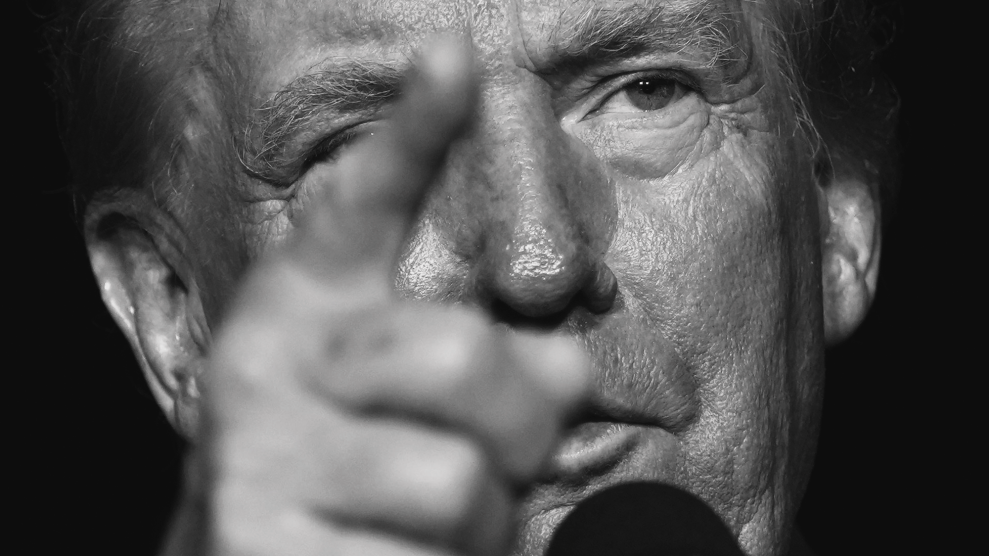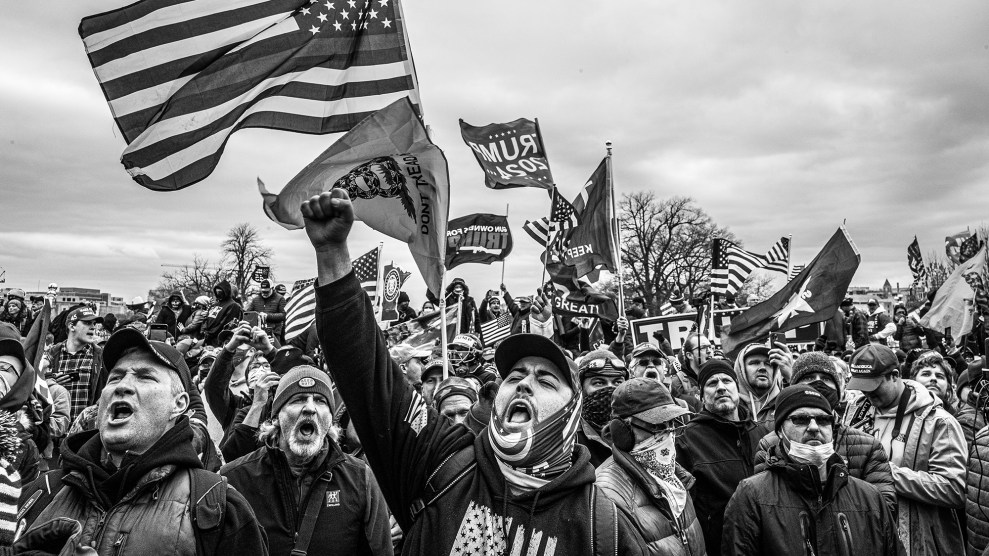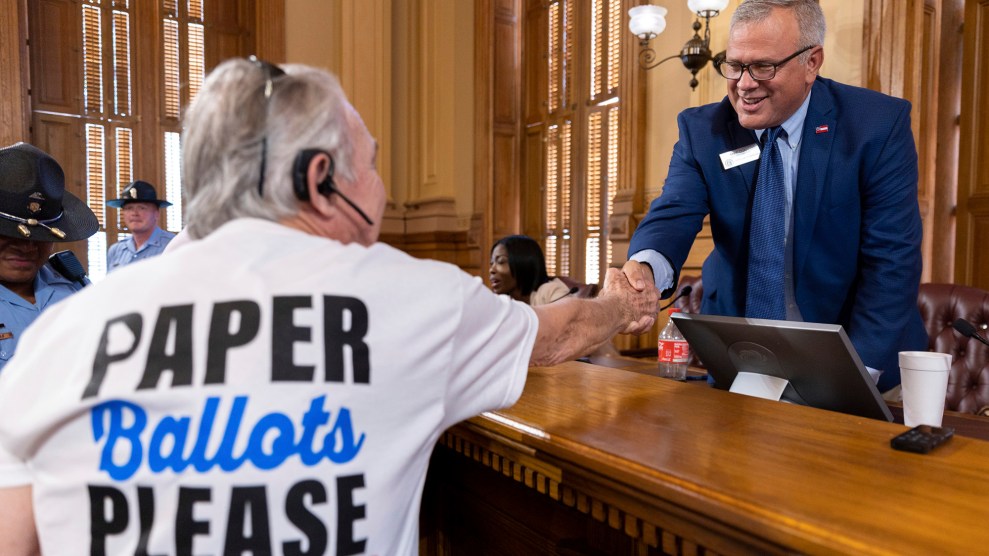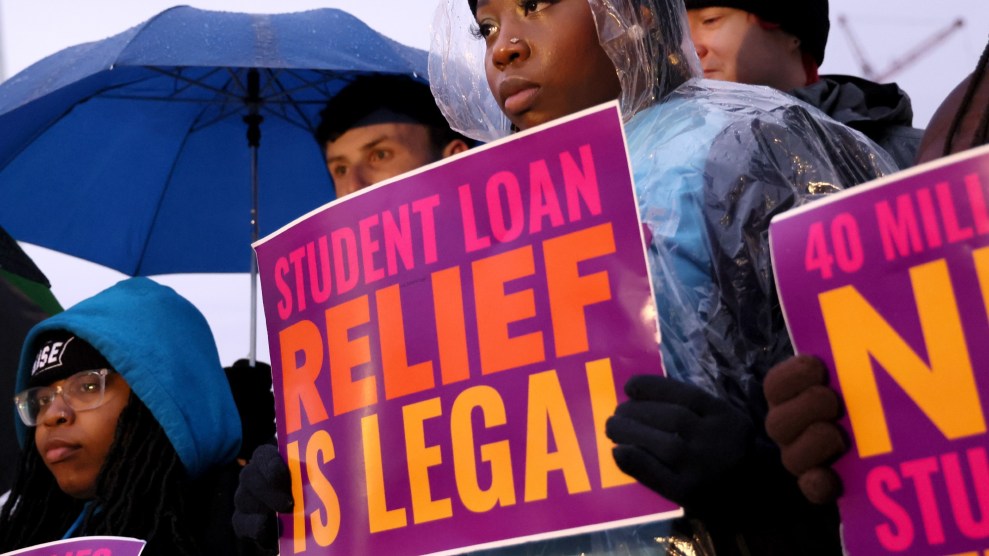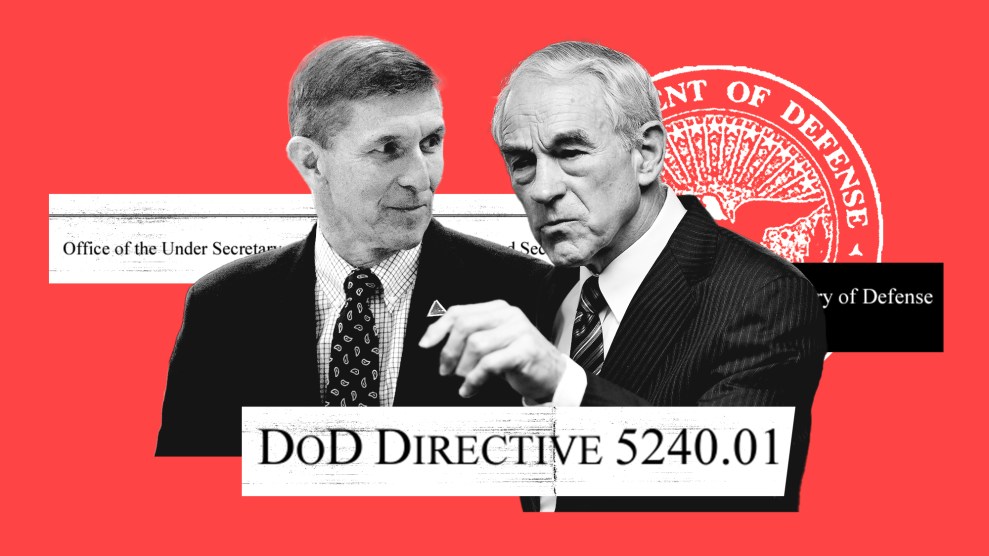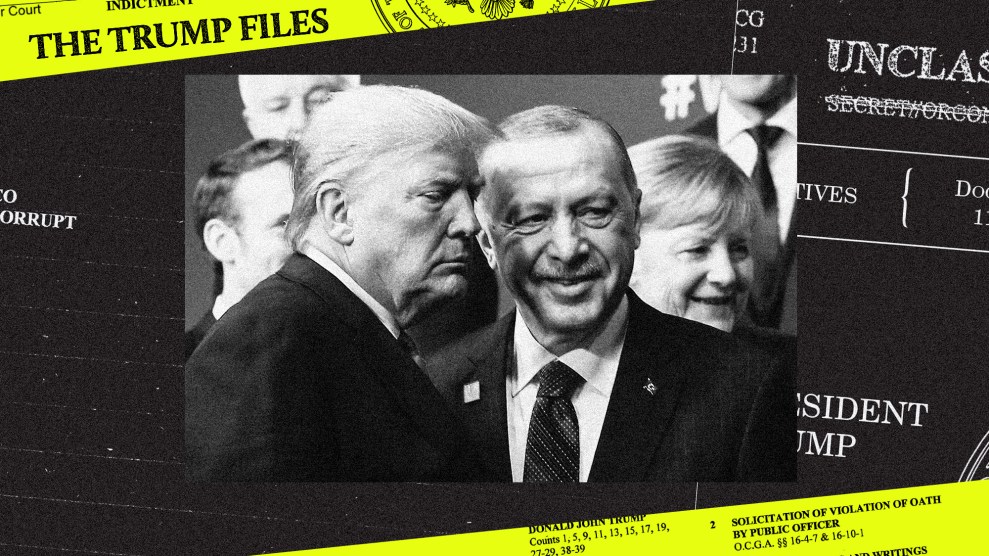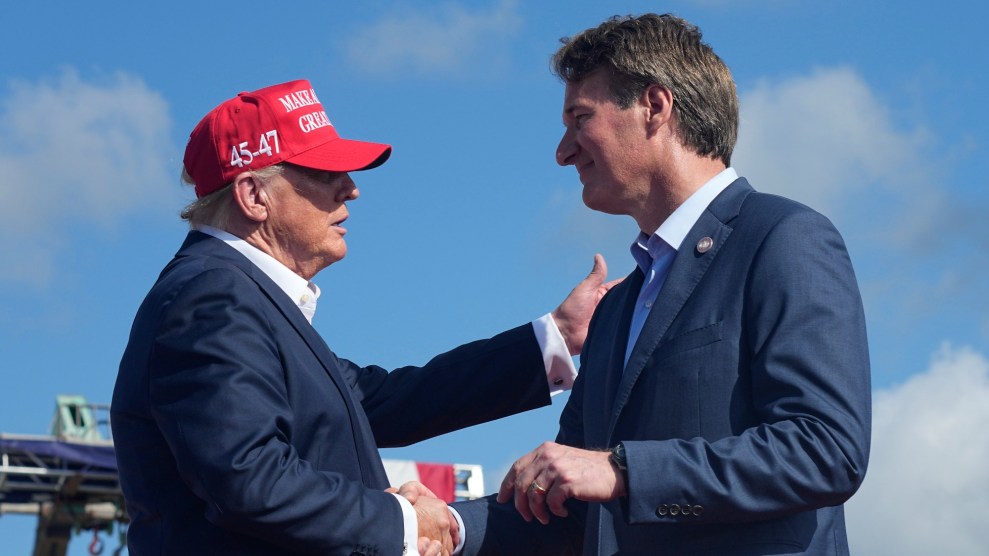
Donald Trump in silhouetteAbaca Press/AP
Donald Trump’s rhetoric during his 2024 campaign has been the darkest in modern memory. He has emphasized grievance and demagoguery ever since he first ran for president, most infamously with his build-up to the January 6 insurrection. But in recent months he has gone to new extremes. In numerous speeches and media appearances, he has peddled false conspiracy theories about the two assassination attempts against him and stoked fear and anger nonstop about an alleged “invasion” of murderous migrants, who he claims are “poisoning the blood of” America and “conquering” cities and towns nationwide.
Throughout the election homestretch, Trump has woven these virulent strands into his core message about a supposed grand conspiracy by Democrats to steal the White House from him. Trump and multiple top surrogates have spent months asserting that his political opponents “even tried to kill him” as part of this plot—a canard Trump further amplified when he returned for a second rally at the site in Butler, Pennsylvania, where a gunman opened fire in mid-July.
During a speech in Atlanta, Trump reiterated lies about Democrats conspiring to use undocumented migrants to transform America. “It’s so sinister,” he said, “but they want to sign these people up to vote, and if they do that, this country is destroyed. We’d become a dumping ground for the entire world.” Trump has drawn on such “Great Replacement” themes—an extremist ideology embraced by multiple mass shooters—ever since he was in the White House. And Trump’s biggest financial backer, Elon Musk, is now also advancing this theme, speaking at Trump rallies and posting with massive reach on his social media platform, X.
Most news media rarely, if ever, frame Trump’s rhetoric for what it is: methodical, sustained incitement. Proving a direct connection between Trump’s incendiary messaging and acts of violence can be all but impossible—a gap of plausible deniability that is central to the method of stochastic terrorism, as it’s known to national security experts. Nonetheless, there is a long history of Trump’s rhetoric correlating strongly with subsequent menace and violence: a surge in threats targeting journalists as “the enemy of the people,” a Trump supporter attacking an FBI field office after Trump raged against the raid on Mar-a-Lago, threats to kill FBI agents over a “stolen election” and the Hunter Biden case.
The intensifying demagoguery from Trump this election season has caused high concern among threat assessment and law enforcement experts, as I’ve been reporting since June. Fortunately, their worst fears about the kind of catastrophic violence it might provoke have yet to be realized. But according to two senior federal law enforcement sources I spoke with in recent weeks, Trump’s extremism has been accompanied by a rise in violent threats reflecting his messaging.
According to these sources, multiple cases of threats have involved individuals citing or parroting Trump’s ongoing claims about violent migrants invading and taking over the country. Trump’s continual focus on that alleged menace has produced a noticeable hardening effect, one source told me: “We see that the longer it’s talked about, the more it becomes perceived as fact.” Other cases have included talk of “payback or revenge” against Trump’s political adversaries for the assassination attempts, including threats focused on elected officials.
“It’s really poisonous, and it’s giving justification to people who are on the edge to take extreme actions.”
Trump’s hyperbole at recent rallies has included macabre descriptions of alleged rape and murder by migrants, such as telling his supporters, “they’ll cut your throat.” After his rally last Saturday in Latrobe, Pennsylvania, most media coverage focused on his lewd comments about golf legend Arnold Palmer’s genitals, but less noted was that Trump also conjured a specter of war against migrants: “We will not be invaded, we will not be occupied, we will not be conquered. That’s what they’re doing. This is an invasion into our country of a foreign military.”
He has continued to blame Vice President Kamala Harris for this non-reality: “She’s letting vicious gangs take over whole communities,” he inveighed at a rally on Monday in Greenville, North Carolina. “She’s bussing and flying them in by the millions.”
A threat assessment expert who consults for federal law enforcement told me that the fear and contempt generated by such rhetoric is potent, and can be interpreted by some people as permission to commit violence. “It’s really poisonous, and it’s giving justification to people who are on the edge to take extreme actions.”
In September, the town of Springfield, Ohio, endured waves of paralyzing bomb threats and other harassment after Trump and his running mate, JD Vance, spread lies about Haitian immigrants supposedly stealing and eating neighbors’ pets. Risk for violence escalated in the southeastern US when Trump and his allies seized on the aftermath of Hurricane Helene, falsely accusing FEMA and the Biden administration of abandoning victims. These repeated lies were debunked by state and local leaders, including Republicans, but that didn’t stop Trump. “They spent their money on illegal migrants,” he declared again at Monday’s rally in Greenville. “They didn’t have any money left for North Carolina.”
Trump has continued to tell this lie in his stump speech—even after a Trump supporter armed with multiple guns was arrested in western North Carolina in mid-October for allegedly threatening to harm FEMA workers. That and other armed threats disrupted the agency’s efforts to help hurricane victims.
Risk for violence around Election Day remains a high concern and a focus for law enforcement, the sources confirmed to me. As one longtime election official in Georgia explained this week to the Wall Street Journal: “People have had four years of just marinating in all sorts of different conspiracy theories, and we worry they’ll come in looking for a problem. Then you got, ‘Hey everyone come down to the polling place,’ and mobs showing up, maybe armed, and it can really snowball very quickly.”
The temperature also has been rising with adversarial partisan crowds, as seen in Pennsylvania on Sunday in the vicinity of a McDonald’s where Trump posed briefly as a fry cook. Concern will extend well beyond Election Day, through a period of uncertainty about voting results that is likely to follow—and that undoubtedly will be further weaponized by Trump and his allies using baseless claims of fraud, sand-in-the-gears litigation, and beyond.
National security and threat assessment experts told me after the January 6 insurrection that quashing the violent extremism unleashed by Trump requires a fundamental change in what political leaders treat as acceptable rhetoric. But through the years of Trump’s continuing grip on the Republican Party, that standard has trended in the wrong direction, with many Republican politicians excusing or even joining in on Trump’s tactics.
With Election Day fast approaching, no Republican member of Congress or high-profile figure in the party is speaking out forcefully against Trump’s dark rhetoric. House Speaker Mike Johnson and others stick to misdirection or feigned ignorance, if they address the matter at all. As one threat assessment source told me: “Silence is its own form of participation.”


